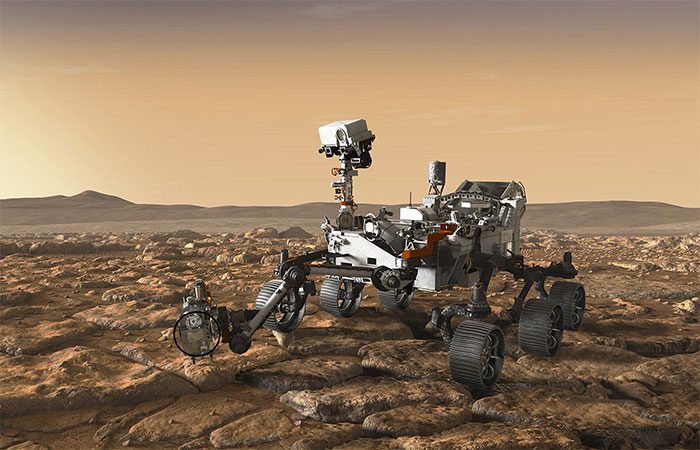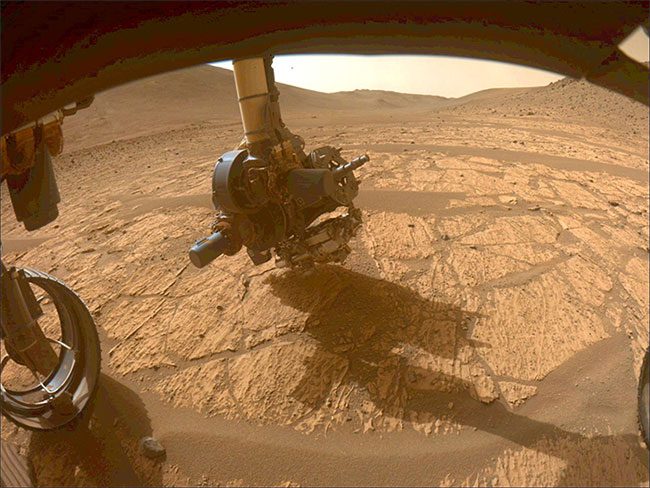The $2.7 billion NASA robot hunting for extraterrestrial life has just spun, wobbled, and even “attacked” its companion SHERLOC with its drill.
A recent statement from NASA revealed that a device aiding the Perseverance rover on Mars in searching for potential signs of alien life has resumed operation.
This device, known as the “Sherlock Holmes of Mars,” SHERLOC, had been inactive since January due to a stuck lens cover.

Perseverance with the “alien life detective” SHERLOC held by its longest arm – (Photo: NASA).
According to SciTech Daily, the device’s name is reminiscent of the detective character Sherlock Holmes created by Sir Arthur Conan Doyle, officially titled “Scanning Habitats with Raman and Fluorescence to Find Organic Compounds and Chemicals.”
SHERLOC is one of the key instruments mounted on NASA’s Perseverance rover.
While analyzing a rock target using its spectrometer and camera, SHERLOC unexpectedly encountered an issue.
SHERLOC’s team determined that a small engine responsible for moving the protective lens cover and focusing for the spectrometer and ACI camera had malfunctioned.

In an image captured on June 14 by another camera of Perseverance, it is using SHERLOC. To date, this “companion” is still operating smoothly – (Photo: NASA).
By testing potential solutions on a duplicate SHERLOC device at JPL, the team has begun a lengthy evaluation process to determine which task to assign to Perseverance.
After all, no one can access Mars, and the only way is for this robot to do everything on its own.
They suggested Perseverance heat the small engine of the lens cover; rotate and shake it in various ways, and even “violently” use the drill attached to the rover in an attempt to dislodge the cover.
This quirky repair method is akin to how people used to bang on old, broken televisions, ultimately saving the expensive equipment of this $2.7 billion robot.

An animation shows Perseverance trying to shake SHERLOC with the stuck lens cover but failing.
“Mars missions are difficult, and bringing equipment back from the brink is even harder,” said Art Thompson, the project director of Perseverance at NASA’s Jet Propulsion Laboratory (JPL).
Perseverance is in the final stages of its fourth science campaign, searching for evidence of carbonate and olivine deposits in the Margin Unit, an area along the interior of the Jezero Crater.
Jezero Crater is an ancient river delta believed to have once teemed with life.
On Earth, carbonates typically form in shallow waters of freshwater or alkaline lakes. NASA hypothesizes that this could have also occurred in the Margin Unit, which formed over 3 billion years ago.
Now, it can continue this mission effectively thanks to the revival of the “detective” SHERLOC.




















































